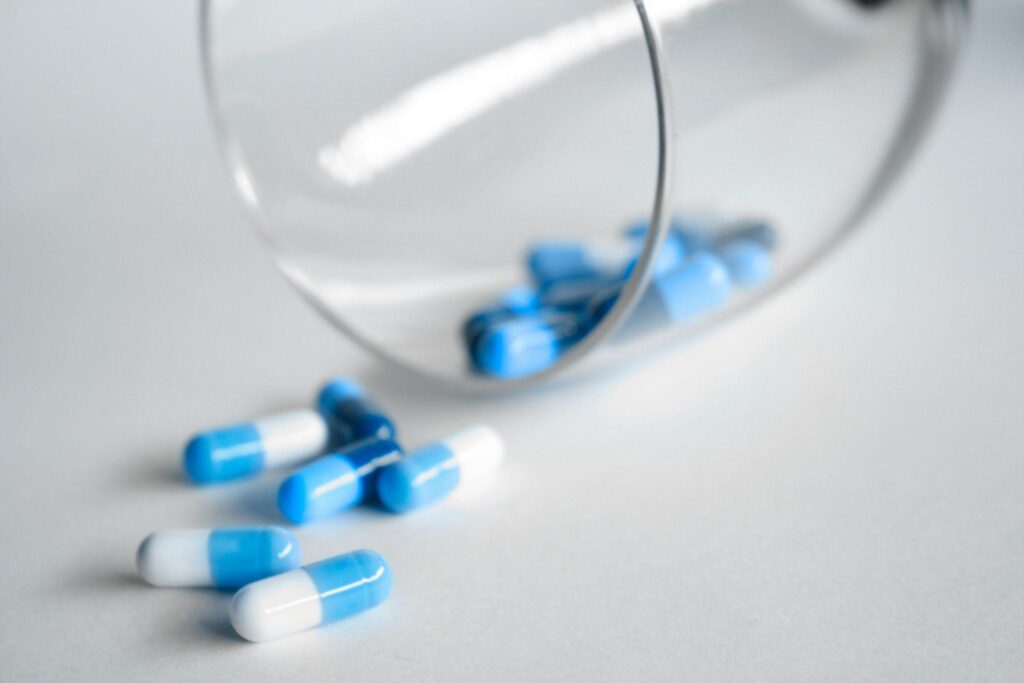In the midst of an opioid crisis that continues to claim thousands of lives each year, Naloxone has emerged as a powerful, life-saving tool. This antidote, when administered during an opioid overdose, can reverse the fatal effects within minutes, thereby averting potential tragedies. Yet, despite Naloxone’s evident benefits, its accessibility, effectiveness, and overall impact on the opioid crisis remain topics of intense discussion and analysis. As we explore these aspects, one is left to wonder: can Naloxone truly be the game-changer in our ongoing battle against opioid addiction?
Understanding Opioid Overdoses
To fully grasp the gravity of opioid overdoses, one must explore the intricate dynamics of how these potent substances interact with the human body, leading to potentially fatal consequences. Opioids, like heroin or prescription painkillers, bind to the opioid receptors in the brain, interrupting the pain signals and releasing large amounts of dopamine. This flood of dopamine not only alters the perception of pain but also triggers a feeling of intense pleasure and relaxation. Over time, the brain adapts to these drugs, developing a dependency that necessitates higher doses for the same effect, one of the critical opioid dependency factors.
The path to overdose is often a tragic progression from misuse to dependency and ultimately, to overdose. As the body’s tolerance levels increase, an individual is compelled to consume larger quantities of the drug, pushing the body beyond its limits. This overdose can depress the respiratory system to a fatal extent.
Overdose prevention strategies center around recognizing the signs of opioid misuse and intervening before it shifts into dependency. These strategies include educating individuals and communities about the risks and signs of opioid misuse, providing access to mental health treatment and recovery services, and promoting the use of overdose-reversing drugs.
What Is Naloxone?
Naloxone, a potentially lifesaving medication, is a critical tool in the fight against opioid overdoses. This medication was developed as a response to the escalating crisis of opioid misuse and overdose, which has claimed countless lives worldwide.
The trajectory of Naloxone development is a tale of medical innovation and urgency, born out of the need to mitigate the deadly effects of opioid toxicity.
Naloxone is a non-addictive, prescription medication that counteracts the life-threatening effects of an opioid overdose. Its development was a pivotal moment in the ongoing battle against the opioid epidemic. This drug was explicitly designed to rapidly reverse the catastrophic effects of opioids on the central nervous system and respiratory system.
However, like all medicines, Naloxone is not without its side effects. While it is generally well-tolerated, some individuals may experience mild to severe adverse reactions. Common Naloxone side effects may include body aches, fever, and nausea. In rare cases, more serious side effects such as heart rhythm problems, seizures, and severe allergic reactions can occur.
Despite these potential side effects, the benefits of Naloxone in the context of an opioid overdose are unequivocal.
How Naloxone Works
Understanding the mechanism of action of Naloxone is essential to appreciating its pivotal role in reversing opioid overdoses. This life-saving drug works by swiftly binding to opioid receptors in the brain, displacing the opioids and effectively reversing the effects. Imagine a lock and key scenario where the opioid is the key and the brain’s receptors are the locks. Naloxone, another key, competes to fit into these locks, effectively pushing out the opioid keys and blocking their return.
The Naloxone formulation is designed for rapid absorption and onset of action, with intranasal and intramuscular forms being the most common. However, the drug’s life-saving potential is not without its limitations. Naloxone contraindications need to be carefully considered. Patients allergic to Naloxone or any of its components should not use it. Additionally, while Naloxone can reverse respiratory depression, it can’t counteract all effects of opioids, particularly in cases of extreme overdose.
When deployed appropriately, Naloxone can rewrite the narrative of an opioid overdose, transforming what could be a tragic ending into a story of survival and second chances. Yet, understanding how it works is just the first step in this life-saving measure.
Accessibility of Naloxone
While acknowledging the impressive capabilities of Naloxone in reversing opioid overdoses, one must also examine the degree of accessibility to this life-saving drug. Despite its undeniable effectiveness, Naloxone’s accessibility is often hindered by various factors, primarily its pricing and the need for policy reforms.
Naloxone pricing can be prohibitive, especially for those in regions heavily affected by the opioid crisis but economically disadvantaged. The drug’s cost has been escalating over the years, making it less affordable for those who need it most. This issue necessitates urgent intervention in the form of policy reforms to guarantee the drug’s affordability and consequently, its accessibility.
Policy reforms can play a significant role in enhancing the accessibility of Naloxone. Policies that encourage the production and distribution of generic versions of the drug could potentially lower prices. Additionally, implementing policies that mandate the availability of Naloxone in settings where opioids are prescribed and used can increase access dramatically.
In essence, the true potential of Naloxone can only be realized when it is accessible to all who need it. Hence, addressing Naloxone pricing and advocating for policy reforms should be a primary focus in the fight against the opioid epidemic.
Naloxone’s Effectiveness in Emergencies
When the dreadful reality of an opioid overdose transpires, Naloxone’s role as a life-saving intervention comes to the fore.
The proper administration of this medication, guided by in-depth understanding and training, is paramount to its effectiveness in such critical situations.
To illuminate this, we will explore real-world success stories and scrutinize relevant statistical data, underscoring the profound impact of Naloxone in emergency scenarios.
Understanding Naloxone’s Role
Despite the grueling effects of opioid overdose, Naloxone emerges as a potent counteracting force, serving as an effective emergency response that can reverse the life-threatening symptoms. The story of Naloxone illustrates its pivotal role in the fight against opioid crises. One of the key aspects that makes Naloxone a game-changer is its affordability. Given the widespread nature of opioid addiction, a cost-effective solution like Naloxone is an essential tool in managing the dire situation.
An exploration of Naloxone’s side effects reveals that it is a relatively safe drug, especially when considering the potentially lethal consequence of an opioid overdose. Most side effects, including withdrawal symptoms, are a result of the rapid reversal of opioid effects rather than Naloxone itself. These side effects, while unpleasant, are a small price to pay for a life saved from fatal overdose.
To fully appreciate Naloxone’s role, it is crucial to understand that it does not address the root of the opioid crisis, addiction. It is a life-saving emergency measure, a beacon of hope in desperate times. However, the battle against opioid addiction requires a thorough approach that includes prevention, treatment, and recovery support.
Administering Naloxone Properly
Understanding the proper administration of Naloxone is as pivotal as its role in combatting opioid overdoses, particularly considering its potential effectiveness in emergency situations. The difference between life and death often hinges on the speed and accuracy of Naloxone administration. Hence, the importance of thorough Naloxone training cannot be overstated.
Training equips individuals, primarily healthcare providers and first responders, with the necessary skills to administer Naloxone effectively. Within this training, individuals learn about the different methods of administration, including intramuscular, intranasal, and intravenous, each with its unique considerations. They also learn to recognize signs of an opioid overdose and the appropriate steps thereafter.
However, alongside its life-saving benefits, Naloxone also has potential side effects. These may include withdrawal symptoms such as restlessness, body aches, and vomiting. It’s crucial for those administering the drug to be aware of these potential reactions and to be prepared to manage them.
Naloxone’s Impact on Opioid Crisis
In the midst of the ongoing opioid crisis, Naloxone has emerged as a pivotal tool, substantially reducing the number of fatal overdoses and reshaping the landscape of addiction treatment. The introduction of Naloxone legislation across various states has facilitated its widespread availability, ensuring quick access to this life-saving drug during an overdose crisis. This has undeniably been a game-changer, marking a significant shift in the approach to combatting the opioid epidemic.
Naloxone’s impact goes beyond just saving lives. It has also triggered a critical conversation about opioid alternatives for pain management, reducing the dependency on these potent drugs. This has led to a broader exploration of non-opioid therapies, such as physical therapy, acupuncture, and cognitive behavioral therapy, providing a much-needed shift in focus from merely managing an overdose to preventing opioid addiction in the first place.
In essence, Naloxone has not just been an antidote to opioid overdoses but also a catalyst for systemic changes in addiction treatment. The ramifications of this can be seen in the progressive reduction in opioid-related deaths and the increasing adoption of opioid alternatives, creating a more holistic, effective strategy for combating the opioid crisis.
Final Thoughts
Naloxone serves as a life-saving intervention in opioid overdoses, reinstating normal respiratory function and reducing the risk of fatal outcomes. Its accessibility and effectiveness in emergencies underscore its critical role in addressing the opioid crisis. Despite potential side effects, its utility is undeniable, offering a reprieve for those ensnared in opioid addiction. As the opioid crisis continues to escalate, Naloxone’s role in mitigating its devastating impacts remains of paramount importance.
If you or someone you care about is struggling with substance abuse, remember that help is readily available. At BlueCrest Health Group, we offer comprehensive substance abuse treatment tailored to meet individual needs, fostering recovery and hope. Our team of dedicated professionals is committed to providing the support, guidance, and resources necessary to navigate the journey to sobriety.
Frequently Asked Questions
What Are the Side Effects of Naloxone?
Naloxone, used for opioid overdoses, can cause side effects including potential allergic reactions. Additionally, it can precipitate withdrawal symptoms in opioid-dependent individuals such as agitation, nausea, fever, and rapid heart rate.
Can Naloxone Be Administered by Non-Medical Professionals?
Yes, naloxone can be administered by non-medical professionals. Public accessibility to naloxone kits and extensive naloxone training programs have increased, equipping individuals with the skills to respond effectively to opioid overdoses.
Is There an Age Limit for Naloxone Administration?
Current naloxone legislation does not specify an age limit for administration. However, pediatric considerations must be taken into account, ensuring the dosage and delivery method are appropriate for the patient’s age and weight.
Whats the Cost of Naloxone and Is It Covered by Insurance?
The cost of Naloxone varies depending on the format and location, typically ranging between $20-$150. Naloxone’s accessibility is often influenced by insurance coverage and prescription policies, with many insurance plans providing coverage.
Does Naloxone Encourage More Reckless Opioid Use?
While naloxone accessibility is essential for addressing opioid overdoses, the misuse potential is a concern. However, research suggests that its availability does not encourage reckless opioid use, but rather provides a life-saving measure in emergencies.


